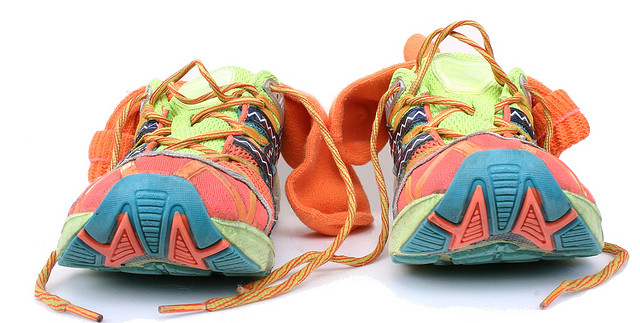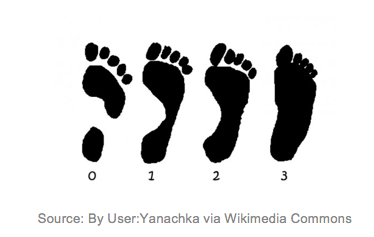Buying the Right Running Shoes to Prevent Injury

Running is a great way to increase your fitness. However, as with a lot of sports and activities, it can be hard on your body unless you use the right equipment. Just like bicycling requires a properly fitted helmet, running requires specific shoes that are designed for that activity and that fit you well.
So, how do you choose the running shoe that’s best for you? Before you head to the shoe or athletic goods store, be prepared to answer a few questions:
Where will you run?
- Road running shoes are designed for pavement, with the occasional off-road trip. For example, you could run on a surface with slight irregularities, like a nature trail or wood-chip path, as long as the majority of your running takes place on a paved road. Because these shoes are light and flexible, they cushion and stabilize your feet on hard, even surfaces.
- Trail-running shoes are designed for the off-road runner. They have strong outsoles that provide solid traction, enhanced stability, support, and protection for the underside of your foot. If you plan on running someplace where you’re likely to be tracking on roots, rocks, mud, holes, or other obstacles, trail runners are the better choice.
What is the natural shape of your foot?
Feet fall into various shape categories: very high arch, high arch, normal arch, and flat-footed. You can determine what kind of arch you have by looking at your footprint. With a wet foot, leave a print on your bathmat or on cement. The diagram below illustrates foot arches, with 0 being a very high arch and 3 being flat-footed. The way your arch is shaped will affect how your foot moves when you run.

How do you run?
Every body is different, and so are our running styles. A podiatrist, physical therapist, or even a knowledgeable shoe salesperson can help determine your running style by how you move. You can figure it out yourself, too. Look at the wear pattern on the soles of a pair of well-used running shoes.
- If the sole is particularly worn at the ball of the foot and just a small portion of the heel, you likely have a neutral stride. This means that your heel strikes the ground first, rolls slightly inward, the arch flattens to cushion the impact, and you don’t run with much side-to-side motion.
- If your wear pattern is along the inside edge of the shoe, you likely overpronate, which means that your foot’s natural inward roll is exaggerated. This is common among runners, but it means that you could be at risk for knee pain or injury.
- If the wear is mostly on the outer edge of your shoe, you likely have supination (or under-pronation), which means that your foot rolls outward when you run. This means that you could have insufficient impact reduction each time your foot lands.
How does this help me choose a running shoe?
Your foot shape (arch) and natural running style are the best guidelines for choosing shoes that are comfortable and will help reduce your injury risk.
Running shoes fall into the following categories:
- Cushioning: Cushioning shoes are good for neutral runners and those who are supinators or have mild pronation. They have elevated shock absorption and minimal side arch support and are best for someone with a normal foot shape.
- Stability: These shoes are ideal for runners who tend to overpronate or neutral runners. Sometimes they have a midsole post to help centralize your foot as you run.
- Motion control: These shoes have a stiffer heel to control overpronation and are a good choice for runners who have a moderate to severe tendency to overpronate.
Finding the correct running shoe size
Running shoes come in all different styles, brands, and colors. It’s best to choose a shoe that coordinates with your body mechanics, rather than one based on appearance. Use these tips to find the right size:
- Try on shoes at the end of the day. Feet normally swell throughout the day and are at their largest by late afternoon/early evening. If you accommodate your foot while it’s swollen, you won’t risk buying shoes that are too small.
- If you use orthotics, try them on with the shoes. The shoe will feel different with and without orthotics.
- Most athletic shoe stores will also carry insoles (footbeds) that can be inserted into the shoe. These are designed to enhance comfort, support, and fit.
- When you try on a shoe, you should have a thumbnail’s length of extra space in the toe box. The width should allow your foot to move without rubbing.
 The Daily Dose
The Daily Dose
Ellie Davis
Thank you for suggesting that you should make sure and take where you are running in mind while you are choosing running shoes. My husband needs new running shoes. I’ll have to find the best ones for him.
Kristin Schultz
Hi Ellie, thanks for taking the time to comment – we’re glad you found our blog helpful!